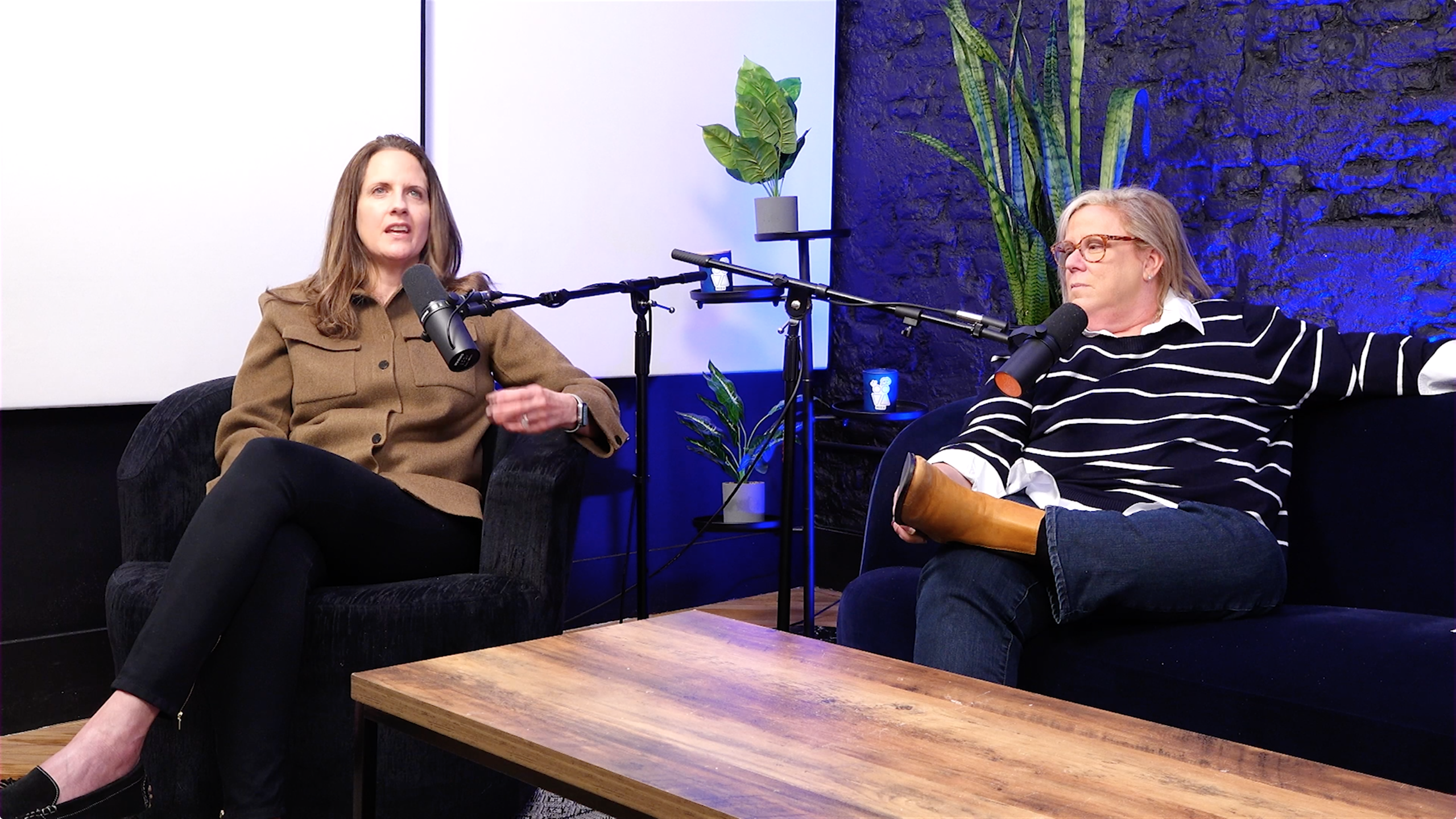Blog Forward Thinking
Amobee Out Loud, Episode 1: Misinformation in Advertising

Today we’re launching our new podcast series: Amobee Out Loud. Hosted by myself and Val Bischak, we’re interviewing experts from across the media ecosystem to explore the transformation taking place in the advertising industry and provide helpful debate and perspective. Along with the weekly episodes, we’ll share blog posts summarizing our discussions.
This week’s episode addresses one of advertising’s toughest challenges: misinformation. This is an issue that affects many facets of society right now, but brands are in a unique position to benefit from, be harmed by, and even influence the spread of misinformation and disinformation. We spoke with guest Kelsey Chickering, Principal Analyst at Forrester for her perspective on the issue.
Misinformation vs. Disinformation
Kelsey starts off by sharing her thoughts on misinformation versus disinformation: what’s the difference between the two, and why does that matter for brands?
The difference between misinformation and disinformation is intent. Misinformation is information that is not true or is out of context, but disinformation is intentionally crafted to deceive the reader. Both have always existed in the public square, but the proliferation of online platforms has accelerated it. Social media algorithms give misinformation and disinformation a tailwind because publishers are creating content that is designed to go viral, or “clickbaity” in internet slang.
The problem, as Kelsey explains, is that both misinformation and disinformation are designed to look credible, so it can be hard to distinguish fact from fiction, good sources from bad actors. This is a big challenge for the advertising industry, because the brand safety measures that are currently in place aren’t always great at identifying this. And in today’s fragmented media landscape, advertisers don’t always know exactly what they’re buying and where exactly their ads will appear at all times. A recent Forrester survey shows that 57% of US and UK respondents do not trust brands that appear on channels that distribute misinformation or disinformation, and most survey respondents assume that brands know where their ads are being placed. The consumer assumption is that if a brand appears alongside false information, the brand is funding it deliberately. With misinformation becoming a mainstream issue that consumers care about, this puts brands at greater risk for consumer distrust.
Mindful Media Planning
No CMO wakes up in the morning thinking “today I want to contribute to the spread of misinformation online,” it’s more likely that they’re simply not aware it’s happening, Kelsey explains. So how can advertisers take a more proactive stance against misinformation? Kelsey recommends an approach she calls “Mindful Media Planning” – proactive, values-based, and innovative. In other words, advertisers need to be fully informed about where their brand dollars are being invested and make proactive media buys with only sources that are credible. Brands can also make their inclusion/exclusion lists smarter by partnering with organizations like NewsGuard and the Global Disinformation Index and incorporating their data about sites that are spewing disinformation into that inclusion/exclusion decision making.
The Role Distributors Play in Misinformation
Kelsey also addresses the role distributors play in spreading misinformation and mitigating it. On the supply side, adtech makes it easy to monetize sites, often with very little verification of whether a site is distributing credible information, Kelsey explains. There is also a lack of incentive on the SSP side for suppliers to clean up their inventory because the more inventory they have, the more monetizable impressions they can sell to advertisers.
Everyone within the media ecosystem contributes to the problem. No one player can fix the problem, but no one player is faultless, either.
Where Do We Go From Here?
When asked where she sees progress being made, Kelsey says she’s hopeful that bigger agencies and holding companies are beginning to tackle the issue by bringing more standardization to their agencies. And some social platforms are demonstrating openness by teaming up with verification partners like Zephyr to verify where advertisers are showing up in a feed.
One thing is for certain: to tackle the problem of misinformation and disinformation, players across the media ecosystem will have to do their part.
It was an insightful conversation to kick off our podcast and we’re excited to share more in the coming weeks! Come back next week for another recap or listen to full episodes and subscribe here. Be sure to leave a review and join the conversation on our LinkedIn, Twitter, and Facebook!
About Amobee
Founded in 2005, Amobee is an advertising platform that understands how people consume content. Our goal is to optimize outcomes for advertisers and media companies, while providing a better consumer experience. Through our platform, we help customers further their audience development, optimize their cross channel performance across all TV, connected TV, and digital media, and drive new customer growth through detailed analytics and reporting. Amobee is a wholly owned subsidiary of Tremor International, a collection of brands built to unite creativity, data and technology across the open internet.
If you’re curious to learn more, watch the on-demand demo or take a deep dive into our Research & Insights section where you can find recent webinars on-demand, media plan insights & activation templates, and more data-driven content. If you’re ready to take the next step into a sustainable, consumer-first advertising future, contact us today.
Read Next
All Blog PostsData & Insights
Amobee partnership with Ampersand and Fortune Media significantly reduced COVID-19 vaccine misinformation using in-depth data analysis and technology. Read more.
June 6, 2022
Forward Thinking
Redundancy in advertising can ruin consumers' modern-day viewing experiences while costing advertisers billions in wasted spending. So how can advertisers control frequency while maximizing reach? Read on as Valerie Bischak, General Manager of Growth, shares insights.
May 31, 2022
Data & Insights
Valerie Bischak shares how media buyers can effectively land their brand message with their target audience through smart technology.
April 21, 2022
